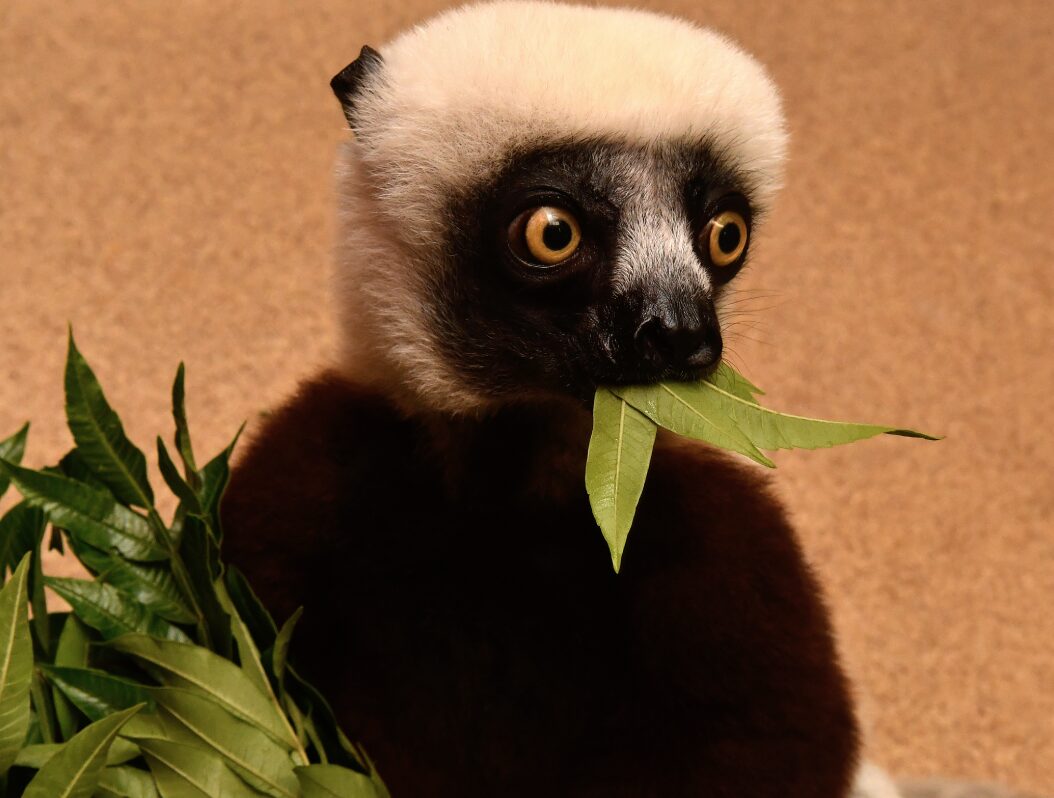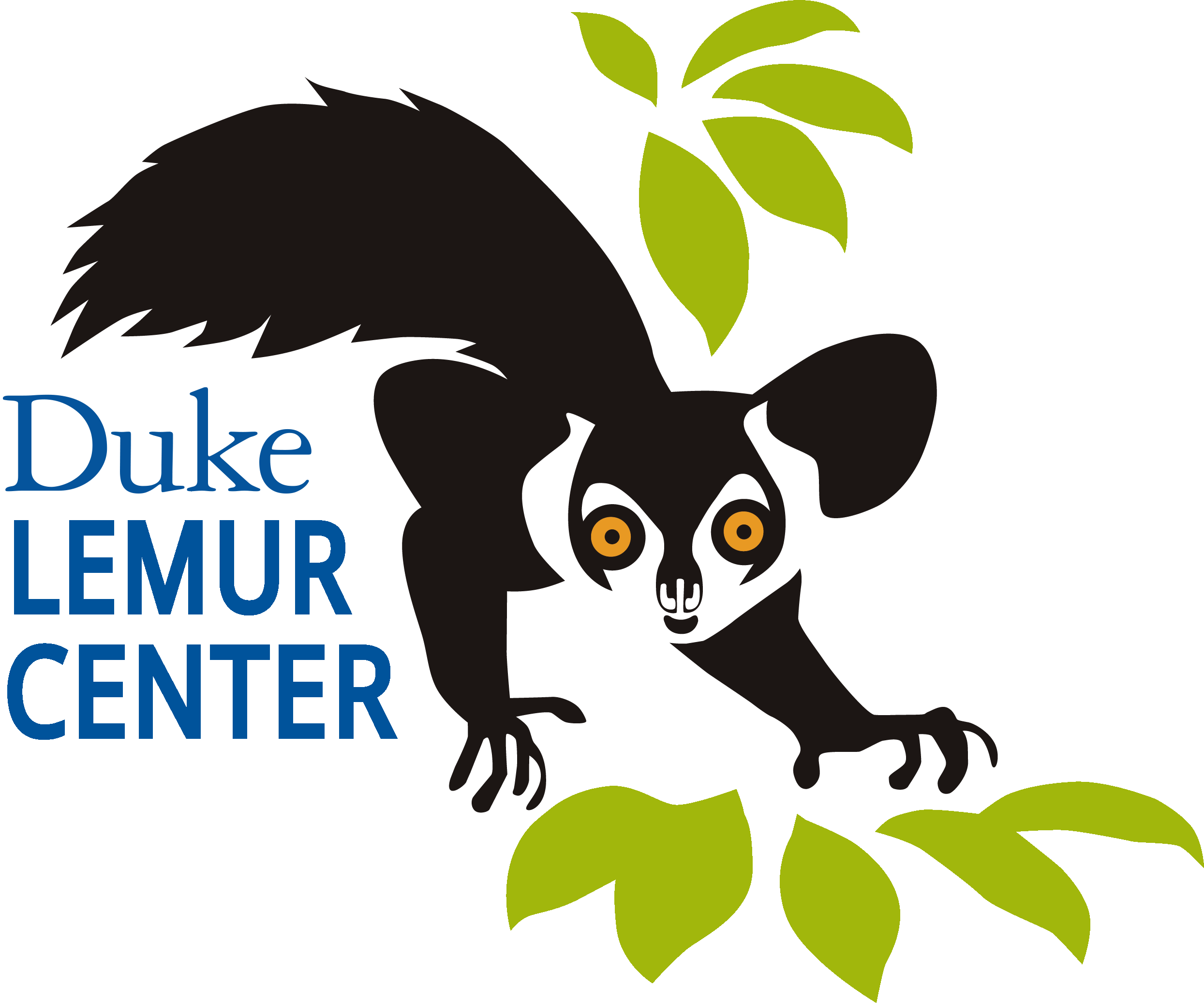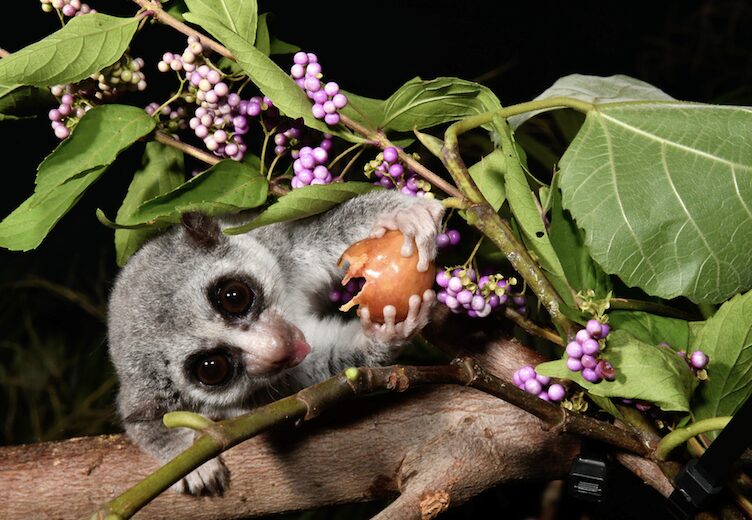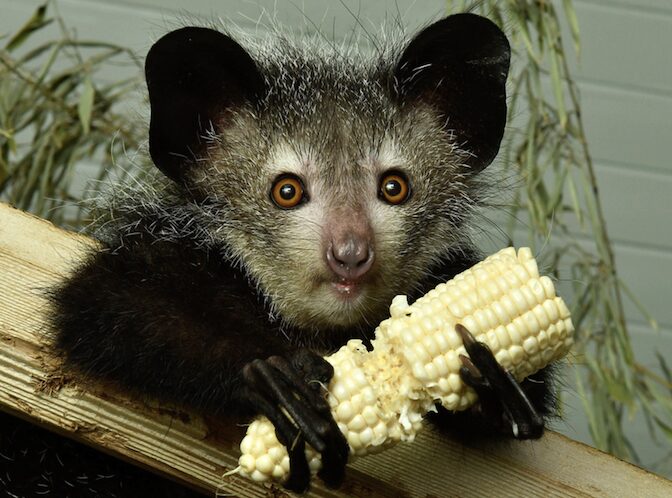By Charlie Welch, DLC Conservation Coordinator. Published on February 21, 2025.
An onsite, organic “food forest”
For over a decade, thanks to a team of garden volunteers, we at Duke Lemur Center (in Durham, North Carolina USA) have been growing vegetables and other edible plants of all sorts for our lemurs. We can’t come close to producing all that the lemurs consume, but we can contribute the freshest, organically grown produce as well as certain specialty items like native winged sumac, the leaves of which are an important part of the sifaka diet.
A couple of years ago we started looking into expanding our sumac space and were fortunate to get clearance to plant in a fenced area in an old field near the visiting researchers cabin, about a hundred yards down from the Lemur Center. We suspected that the soil there would be good, thanks to years of Dr. Peter Klopfer’s research goats roaming the area in the past. We were not wrong!
After the initial plantings of sumac (and later redbud and mimosa) we decided to make use of the extra space as the sumac plantings spread, by planting annual veggies such as melons, cucumbers, tomatoes, corn, and green beans for the lemurs. Thanks to the rich loamy soil, the harvests have been magnificent.
As we considered the long-term objectives of the ample new garden area, we decided to dedicate a portion of the space to fruiting trees and shrubs, with an emphasis on fruits that are delicate for shipping or expensive (or both!)—to create a lemur “food forest” right here in North Carolina! Our diverse plantings are so far still young, but include paw paw, figs, Asian persimmons, blackberries, hardy kiwi, and blueberries. We are all very much looking forward to future harvests, with of course a sample taste here and there!

Coquerel’s sifaka Carlo with a mouthful of winged sumac, an important part of a sifaka’s daily diet.




